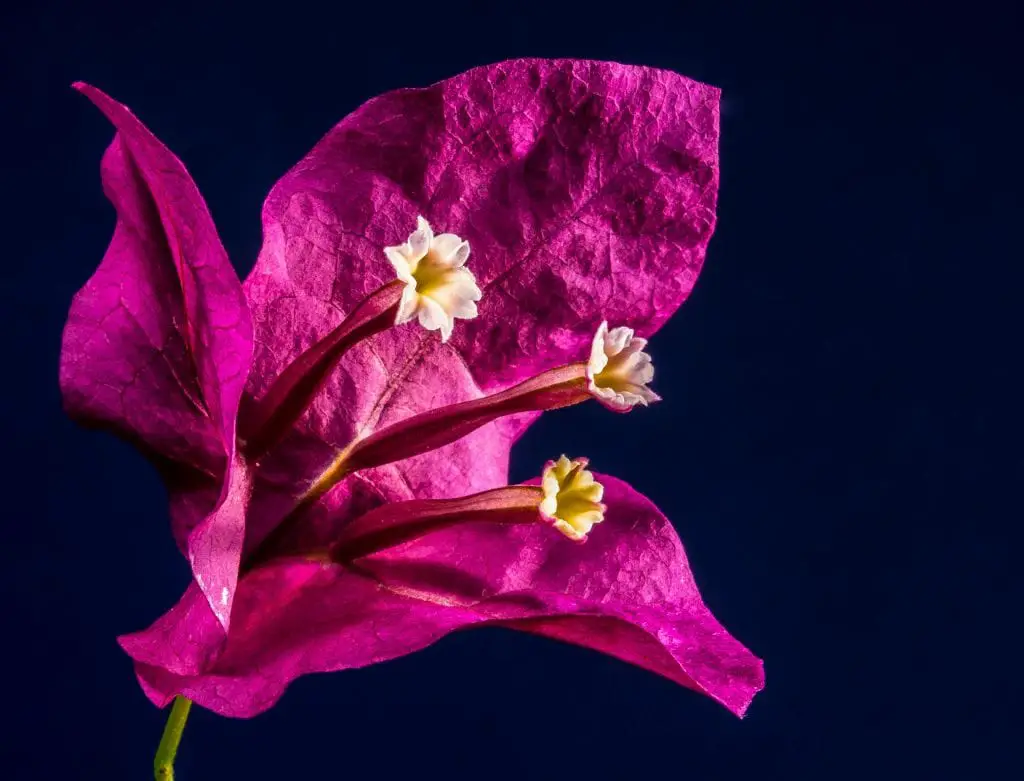
About the Bougainvillea Plant
With over 300 different varieties available around the world, bougainvillea is a widely popular ornamental plant. Especially found in warm, hot and humid climates, this thorny shrub bears paper-like bracts in bright colors like burgundy, orange, pink, white and purple. These clusters surrounding the actual tiny flower are the highlighting factor about the bougainvillea plant. Its leaves are heart-shaped, and normally, the bougainvillea can be found on hedges, walls, over fences and gates. Best suitable to grow in dry soil, bougainvillea has a high salt and drought tolerance. The growth rate may vary from rapid to slow based on the cultivar or variety of the plant. It can also be grown in pots, hanging baskets and in containers.
How to Grow Bougainvillea in a Container?
Many varieties of Bougainvillea can grow comfortably in a pot or a container as long as they are getting a good amount of sun. Here are steps to follow to ensure that your bougainvillea will grow and bloom successfully:
– Take a container with a hole – Drainage is extremely important for this plant and it is one of the most important thumb rules in bougainvillea care. Excess water retention in the soil can lead to the rotting of the roots, which is harmful for your flowering shrub.
– Loosen the soil well – The soil needs to be loosened and rich before you do the actual planting. So experts advise adding about one-third amount of compost to two-third amount of soil as it helps in keeping it at the optimum level. Also, it is best to select a potting soil that does not have a concentration of peat moss, as it tends to retain water.
– Planting method – A bougainvillea plant can be grown with tip-cutting method or direct rootball planting. When you are planting it in a container, it is best to use the tip-cutting method. Prep the stem by removing all leaves from it, and put it upright into the treated soil. The branch should sink about 2 inches inside the soil.
– Watering – The quintessential factor in bougainvillea care is understanding it’s watering requirements. Newly planted branches will need to be water-sprayed regularly to develop. However, if it gets overly wet, then it could result in leafier and less flowery growth, with extreme cases resulting in the rotting of the root. So, it is recommended to keep a close eye on the soil’s water retention level, and water the bougainvillea accordingly.
– pH check – The ideal pH balance for a bougainvillea plant is slightly acidic, between 5.5 to 6.0. Thus, it is advised to check the pH of the soil before you are planting the shrub. In case it is required, you could use sulphur or limestone to decrease or increase the pH level of the soil.
– Temperature – Since it is a naturally a warm-weather plant, your bougainvillea will need about five to six hours of sun to bloom well. If you are in a coastal region or live in a warm-weather zone, you have an advantage. However, if you are in a cold-weather area, be careful about the location you choose for the plant, as it cannot tolerate frost. In such colder climates, it is best to plant a new bougainvillea much before the chill sets in, so the plant has had enough time to take root and grow.
– Installing a trellis – If you plan on keeping the plant within the container itself, then install a trellis around where you would keep the pot.
– Choosing the right variety – If you will be growing the bougainvillea in a container, it is better to select certain shorter varieties. Going for the taller ones that usually grow up to 25 or 30 feet is not suitable for a container planting. Some ideal choices for container-grown bougainvillea are the white ‘Miss Alice’, Orange ‘Bambino Baby Sophia’, ‘Singapore Pink’ or ‘Rosenka’ pinks. ‘Crimson Jewel’, ‘Oh-La-La’, ‘La Jolla’ and ‘Raspberry Ice’ reds and ‘Vera Deep Purple’ purple flowering variety are also good.
Bougainvillea Care & Maintenance

If you are an experienced green-thumb or just starting to experiment being a plant parent, knowing a few tips and tricks of maintaining your plant babies helps. It will make you go a long way in giving you a blossoming garden. Here are a few bougainvillea care pointers that you should know:
– A new plant needs the soil to be moist, so water at regular intervals. However, once the plant has grown, it will flower nicely in slightly dry soil.
– Keep a check on the soil’s drainage and do not water unless the soil feels dry.
– Frequent fertilization is important for the bougainvillea as it is a heavy feeder and needs the fodder to thrive, especially during the growing and flowering seasons. Using a water-soluble option every week to fortnight, mixed at 50% is good. Using a slow-releasing fertilizer during midsummer or spring is also suggested by experts.
– Pruning is an important factor to keep in mind while caring for your bougainvillea. Especially, when your plant is in a container, keeping it pruned and at the desired size will help you in keeping it healthy and stop it from overgrowing all over the place. It is suggested that the best time to prune your bougainvillea plant is just after it has had a full bloom.
– Even if the plant is in a container, it is essential to provide it with a support system. It could be in the form of a trellis or wall support, so that it can extend its branches and grow happily. You could mould the growth pattern by carefully wrapping the branches in the direction you want the plant to take.
Keen observation is a very important aspect of ensuring proper care of a bougainvillea plant. The plants do not die overnight. So it is essential to keep an eye out to see if they are wilting or not blooming properly. In this way, you could check for reasons and can adjust your care techniques to cater to your plants better.
